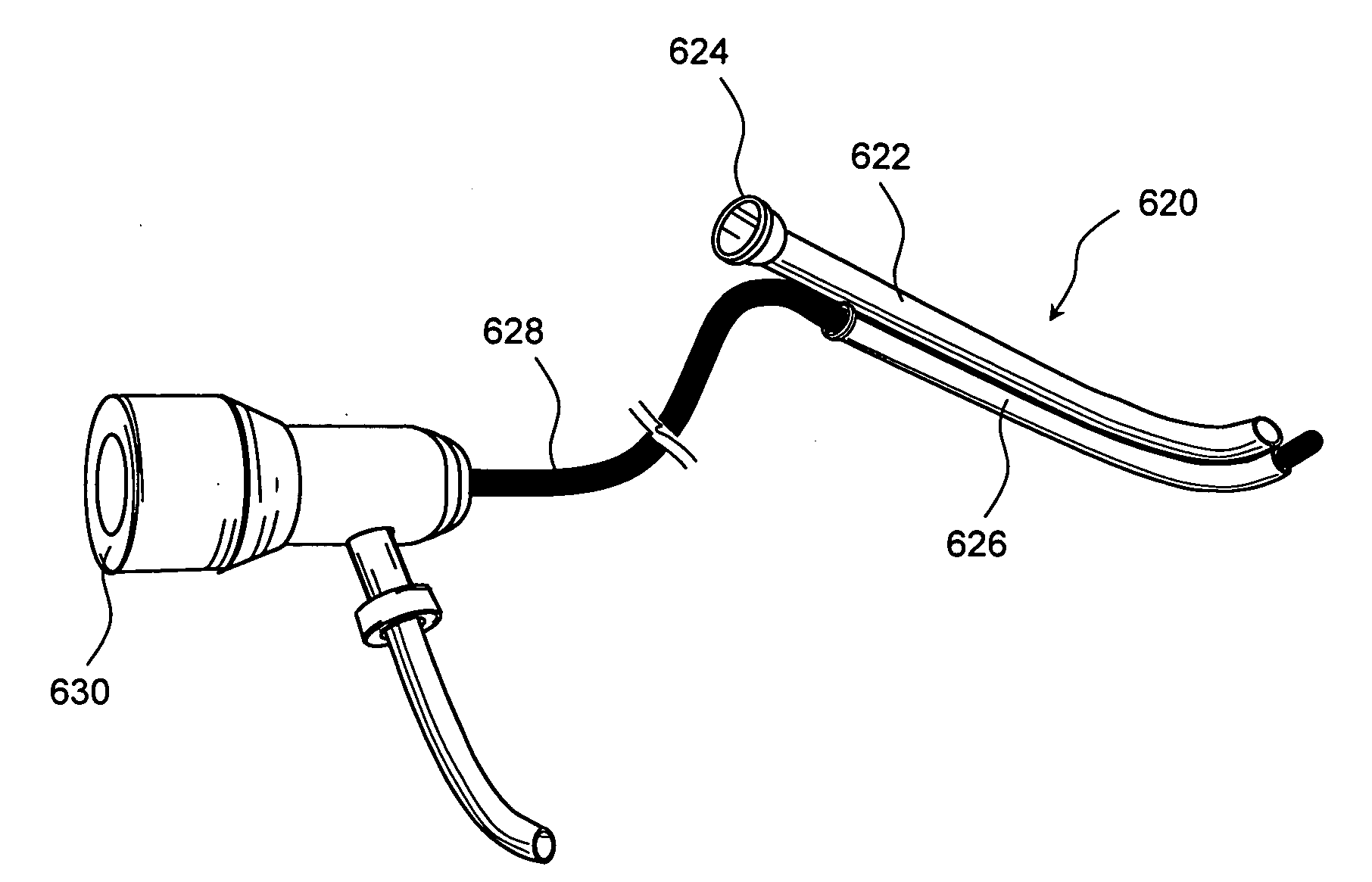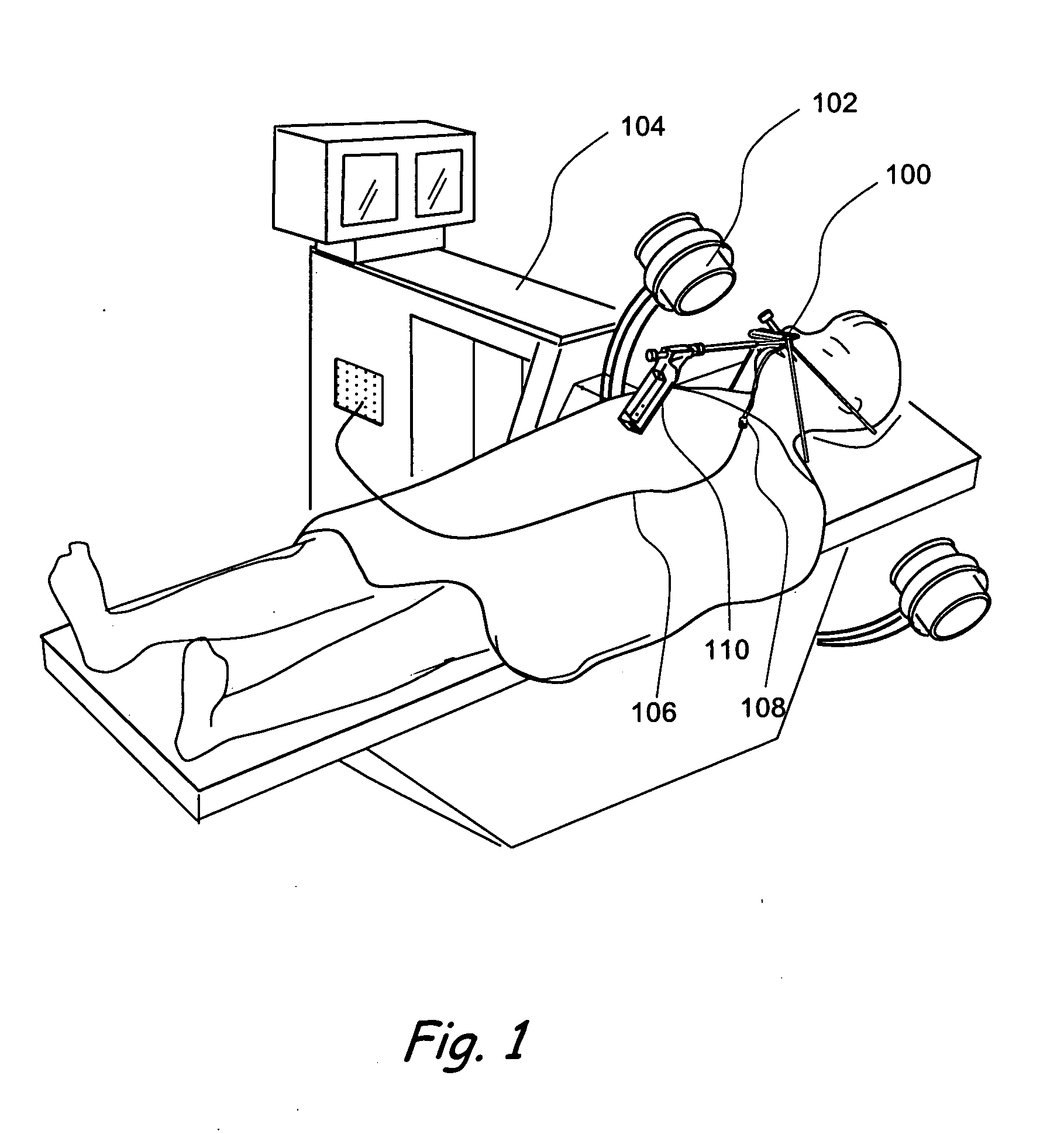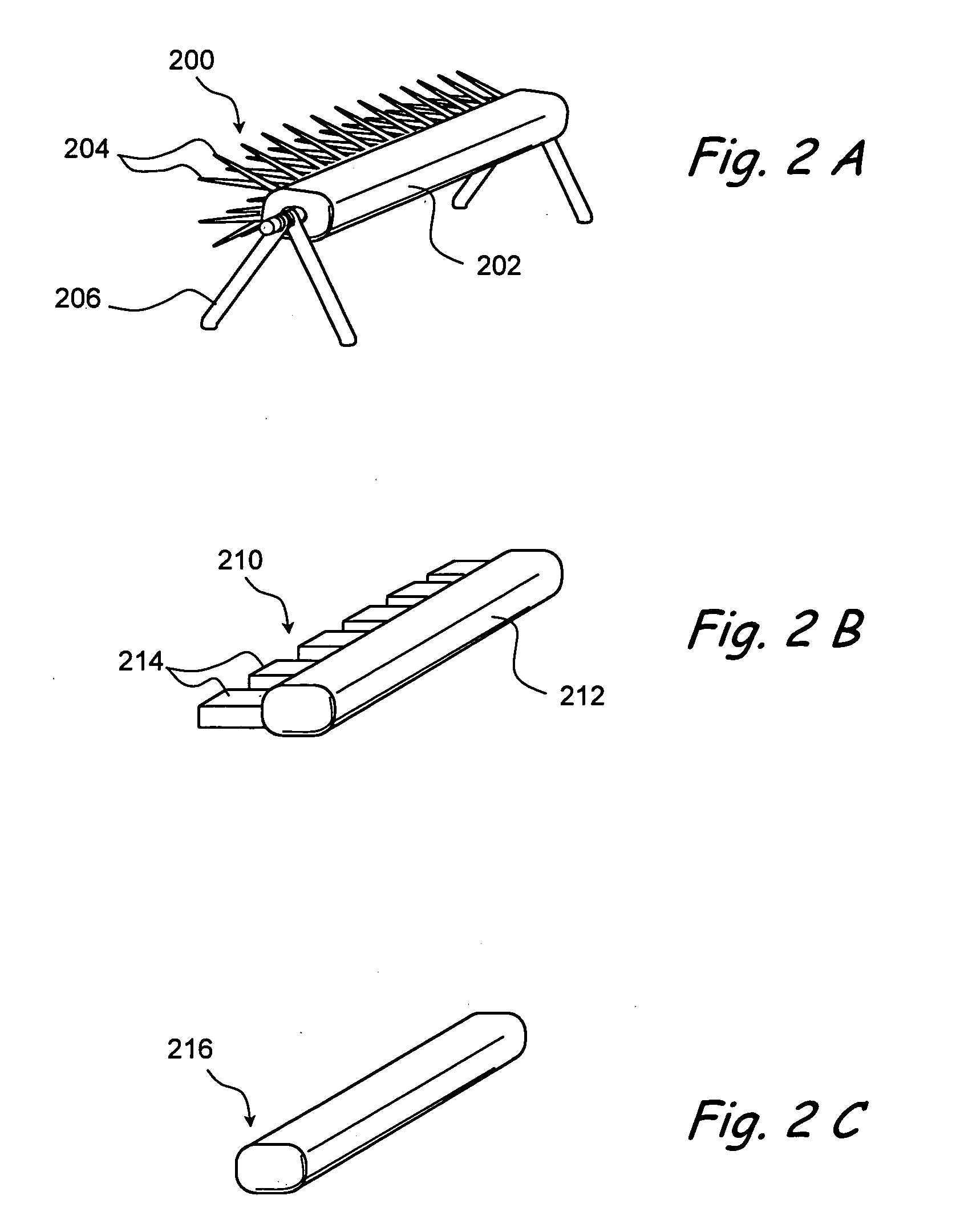Methods and apparatus for treating disorders of the ear, nose and throat
a technology of ear, nose and throat, applied in the field of medical equipment and methods, can solve the problems of subcutaneous dissection of deep structures using the available rigid instrumentation, and achieve the effects of preventing fluid leakage, facilitating visualization and/or access, and deterring unwanted movement of catheters
- Summary
- Abstract
- Description
- Claims
- Application Information
AI Technical Summary
Benefits of technology
Problems solved by technology
Method used
Image
Examples
second embodiment
[0151] FIGS. 5B-C show a seeker device 510 comprising an elongate body 512 having a lumen 518 extending therethrough from end to end. Elongate body 512 can be made of suitable biocompatible materials including, but not limited to metals e.g. stainless steel, titanium, Nickel-titanium alloy (e.g., Nitinol), etc.; polymers e.g. Pebax, PEEK, Nylon, polyethylene, etc. The distal region of elongate body 512 may comprise a bent, angled or curved region. In some embodiments, some (e.g., a distal region) or all of the elongate body 512 may be substantially curved or malleable. The distal end of elongate body 512 may, in some cases, comprise an atraumatic tip 514 to prevent or reduce damage to adjacent anatomy while using seeker 510. In the embodiment shown in FIG. 5B, atraumatic tip 514 comprises an enlarged, substantially spherical region. The proximal region of elongate body 512 may comprise a handle 516 to enable a user to advance and / or twist seeker 510. In the particular example of FIG...
first embodiment
[0185] The guide catheters disclosed herein may comprise a bent, curved or angled distal region to allow easier access to a paranasal sinus ostium. Such guide catheters may further comprise mechanisms to introduce an endoscope along the guide catheters. For example, FIGS. 14A through 14E′ show side views of embodiments of guide devices comprising bent, curved or angled distal regions and mechanisms to introduce an endoscope along the guide catheters. One or more of these guide devices may be provided as a part of the system for diagnosing or treating paranasal sinus pathologies. FIG. 14A shows a side view of a guide device comprising a substantially straight distal portion. Guide device 1400 comprises an elongate tube 1402. Elongate tube 1402 may be made of suitable biocompatible materials such polymers e.g. Nylon, Pebax, etc. In a preferred embodiment, the material of elongate tube 1402 has Rockwell hardness in the range of about 70R to about 110R. In this preferred embodiment, the...
third embodiment
[0189]FIG. 14E shows a side view of a guide device comprising a bent, angled or curved distal portion. The design of guide device 1440 is similar to the design of guide device 1410. Guide device 1440 comprises an elongate tube 1442. The distal portion of elongate tube 1442 comprises a curved, bent or angled region curved at an angle ranging from 140 degrees to 120 degrees. In this embodiment, distal portion of elongate tube 1442 is bent by an angle of around 110 degrees. An optional dilating balloon 1443 may be located on the distal region of guide device 1440. Dilating balloon may be made of suitable biocompatible materials including, but not limited to PET, Nylon, PVC, etc. The distal portion of elongate tube 1442 comprises an atraumatic tip 1444. Guide device 1440 further comprises a hypotube 1446. Guide device 1440 further comprises an endoscope introducing mechanism for introducing an endoscope EN. In the embodiment shown in FIG. 14E, the endoscope introducing mechanism compris...
PUM
 Login to View More
Login to View More Abstract
Description
Claims
Application Information
 Login to View More
Login to View More - R&D
- Intellectual Property
- Life Sciences
- Materials
- Tech Scout
- Unparalleled Data Quality
- Higher Quality Content
- 60% Fewer Hallucinations
Browse by: Latest US Patents, China's latest patents, Technical Efficacy Thesaurus, Application Domain, Technology Topic, Popular Technical Reports.
© 2025 PatSnap. All rights reserved.Legal|Privacy policy|Modern Slavery Act Transparency Statement|Sitemap|About US| Contact US: help@patsnap.com



